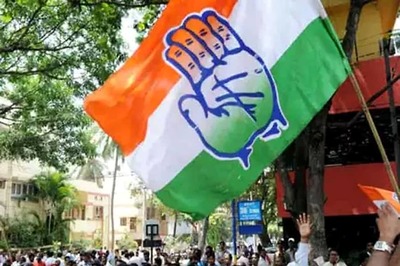
views
Tensions between India and China along the Line of Actual Control are the “worst” in over four decades, a top American Admiral has told lawmakers during a Congressional hearing on the Indo-Pacific, a strategic region which has seen aggressive moves by Beijing. The statement of Commander of US Indo-Pacific Command Admiral John Aquilino on Wednesday came ahead of the 15th round of high-level military talks between India and China on March 11.
Tensions along the Line of Actual Control (LAC) between the PRC (People’s Republic of China) and India are the worst in over four decades, Admiral Aquilino told members of the House Armed Services Committee during the Congressional hearing on the Indo-Pacific region. Aquilino said that in October 2021, the Chinese legislature passed a land borders law that asserts “sacred and inviolable” sovereignty and territorial integrity and provides a domestic legal framework for greater PLA (People’s Liberation Army) involvement in border security.
This law took effect on January 1, 2022, representing a continuation of PRC’s use of domestic law as a pretext to the use of force to resolve territorial disputes, he said. Ely Ratner, Assistant Secretary of Defence for Indo-Pacific Security Affairs, said that the United States is closely watching developments along the Line of Actual Control at the India-China border.
Responding to a question from Congressman Andy Kim, Ratner said that India has faced tough situations from China along the LAC. In the case of India, we have seen a test case of this in the last several years when the Indians were facing aggression from China on the Line of Actual Control where the United States rapidly provided capabilities in intelligence and in the context of trying to improve trust and the nature of the defence relationship.
That was a defining moment. So this is about them being ready to support our efforts, but also us being ready to support theirs. And these are precisely the kind of conversations that we’re having at a political military level with a number of our closest partners, Ratner said. Aquilino said that the Chinese have taken lives on the Indian Line of Actual Control, referring to the clash at Galwan Valley in which 20 Indian military personnel died.
In February last year, China officially acknowledged that five Chinese military officers and soldiers were killed in the clashes with the Indian Army though it is widely believed that the death toll was higher. They have discounted their agreement as it applied to Hong Kong. They have locked up a million Muslims in Xinjiang. So, their actions, the PRC actions, not US actions, not any other nations’ actions, are the things that give us concern, he said.
Aquilino said that China seeks to become a global military power and acquire the ability to seize Taiwan, while developing conventional weapons that can reach the US Homeland. China views Taiwan, a self-ruled island, as a rebel province that must be reunified with the mainland, even by force.
China also seeks to establish a network of overseas military installations that would extend its reach, allowing support for an increasingly global PLA capable of power projection far beyond the Indo-Pacific, Aquilino said. China claims nearly all of the disputed South China Sea, though Taiwan, the Philippines, Brunei, Malaysia and Vietnam all claim parts of it. Beijing has built artificial islands and military installations in the South China Sea. Beijing is also involved in a maritime dispute with Japan over the East China Sea.
Beijing’s entwined economic and military influences are apparent in the coercive economic actions the PRC has taken against US allies and like-minded partners. President Xi (Jinping)’s signature One Belt, One Road (OBOR) initiative (more widely known as the Belt and Road Initiative) is one of Beijing’s attempts to increase its influence and access globally. The PRC’s military-civil fusion makes even academic research cooperation with PRC entities in certain sectors fraught with potential national security risk, he said.
The PRC’s pressure campaign against Taiwan, deliberate undermining of autonomy in Hong Kong, activities along the Sino-Indian Line of Actual Control, and excessive maritime claims are creating instability and increasing the risk of unintended incidents, Aquilino added. According to Indian officials, India and China will hold the next round of high-level military talks at Chushul Moldo meeting point in Ladakh on Friday to end the 22-month standoff at the remaining friction areas.
India has been talking with China about a quick disengagement on remaining friction points in eastern Ladakh such as Patrolling Point 15 (Hot Springs), Depsang Bulge and Demchok. The eastern Ladakh border standoff between the Indian and Chinese militaries erupted on May 5, 2020, following a violent clash in the Pangong lake area. Both sides gradually enhanced their deployment by rushing in tens of thousands of soldiers as well as heavy weaponry.
Read all the Latest News India and Breaking News here




















Comments
0 comment